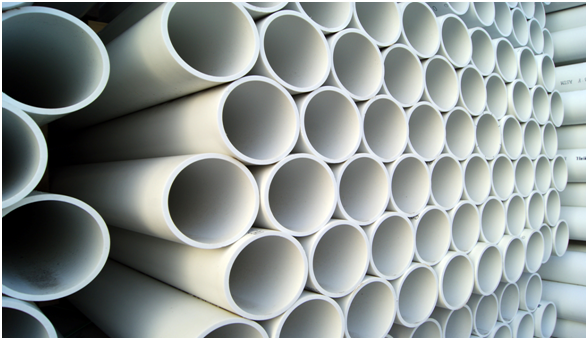Plastic materials did not become a part of our everyday lives until the 1920s and beyond. Now we find them everywhere, in microchips and supermarket shopping bags. Even though we group plastic into one category, it is actually a collection of materials with different properties for different uses. You might be surprised at the number of different plastics available, often taking the place of metal in a large range of applications for everyday use. Here are 5 of the most common types of plastic and what we use them for:
High Density Polyethylene
This is not a very dense plastic but is incredibly strong, able to withstand extremely high temperatures and exposure to strong chemicals. It’s a highly useful plastic as it’s easy to recycle and be re-used in many different ways. It can be found in containers used for soap and cleaners, shopping bags, food storage, plumbing equipment like pipes, helmets, caps for bottles and even in fuel tanks for vehicles.

Polyvinyl Chloride (PVC)
Cheap to manufacture and incredibly durable, PVC is highly resistant to environmental and chemical damage. It is moulded easily into different shapes and is very versatile as a material for house building fixtures. It can be used to make solid, rigid products but also to form softer materials such as leatherette. You’ll find it used in all kinds of signage, flooring, furniture, cables, water bottles and pipes. UPVC is another form of plastic found often in-home fixtures such as UPVC Fascia Boards. For more supplies similar to these, visit https://www.absolutebuildingplastics.co.uk/upvc-fascia-boards/
Polyethylene Terephthalate
This is one of the most common plastics seen in everyday objects. It is flexible and can be produced to be both easily bendable or rigid. It is incredibly hardy and resistant to such forces as impact, weather and chemicals. It works very well as a water and gas barrier and is commonly found in bottles, food packaging trays and even in first aid blankets.
Polypropylene
Another strong and adaptable plastic, polypropylene is the most effective plastic for melting and using in injection moulding. The properties that make it good for this purpose include having a high tolerance for extreme heat and is also considered to be safe for use in food packaging. You’ll find this plastic used in medical tools and equipment, food containers, clothing, sticky tape, crisp packets, straws and kettles.

Low Density Polyethylene
LDPE is another plastic that’s used a great deal for everyday purposes. It has non-reactive properties which make it useful for a wide range of applications. It isn’t as strong as the high-density version but can still withstand temperatures up to 100 degrees Celsius and is highly resilient to damage. This plastic can be found in items such as storage lids, playground slides, bin bags, parts for machines and trays and containers.

